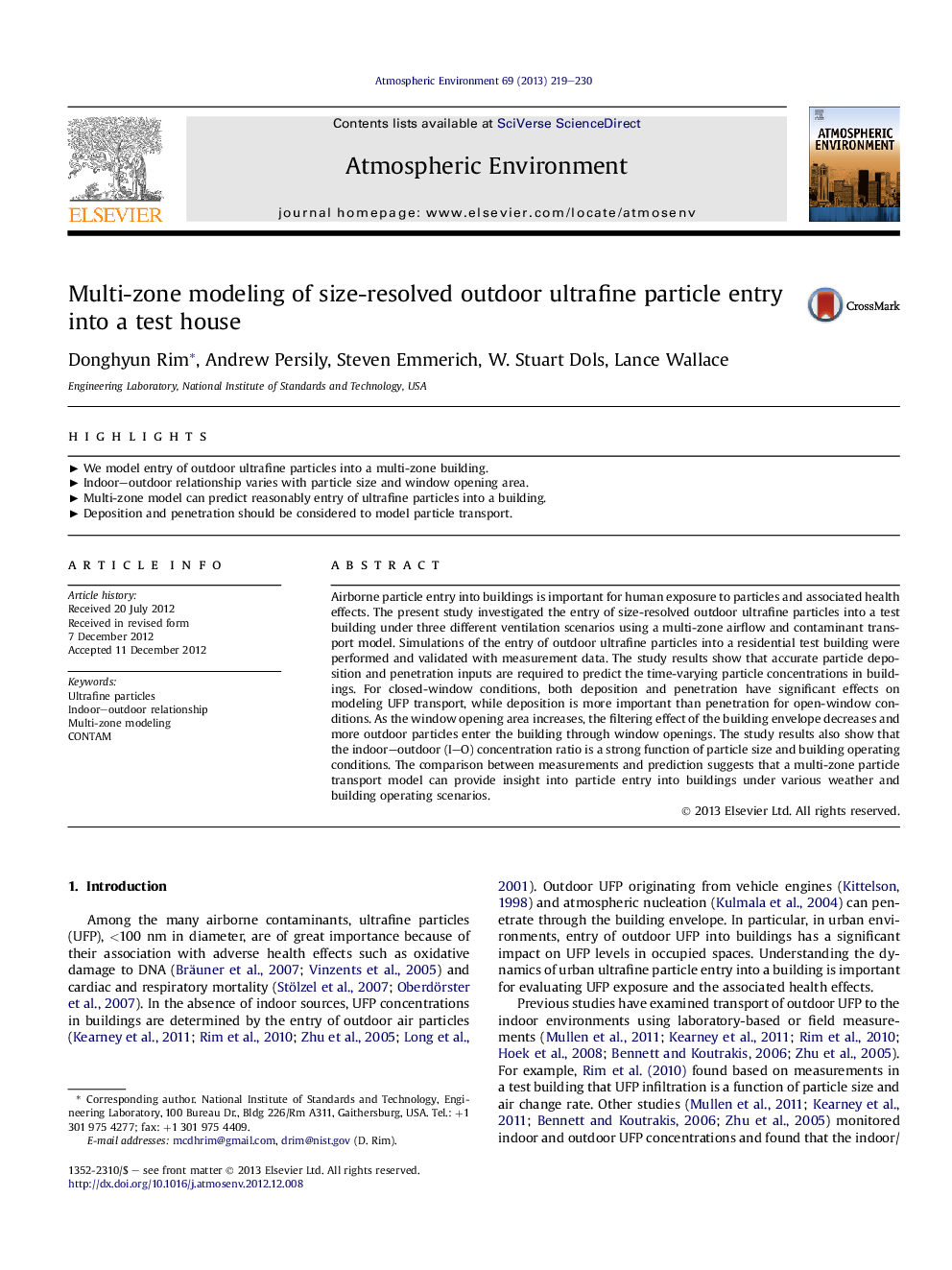| کد مقاله | کد نشریه | سال انتشار | مقاله انگلیسی | نسخه تمام متن |
|---|---|---|---|---|
| 4438377 | 1620402 | 2013 | 12 صفحه PDF | دانلود رایگان |

Airborne particle entry into buildings is important for human exposure to particles and associated health effects. The present study investigated the entry of size-resolved outdoor ultrafine particles into a test building under three different ventilation scenarios using a multi-zone airflow and contaminant transport model. Simulations of the entry of outdoor ultrafine particles into a residential test building were performed and validated with measurement data. The study results show that accurate particle deposition and penetration inputs are required to predict the time-varying particle concentrations in buildings. For closed-window conditions, both deposition and penetration have significant effects on modeling UFP transport, while deposition is more important than penetration for open-window conditions. As the window opening area increases, the filtering effect of the building envelope decreases and more outdoor particles enter the building through window openings. The study results also show that the indoor–outdoor (I–O) concentration ratio is a strong function of particle size and building operating conditions. The comparison between measurements and prediction suggests that a multi-zone particle transport model can provide insight into particle entry into buildings under various weather and building operating scenarios.
► We model entry of outdoor ultrafine particles into a multi-zone building.
► Indoor–outdoor relationship varies with particle size and window opening area.
► Multi-zone model can predict reasonably entry of ultrafine particles into a building.
► Deposition and penetration should be considered to model particle transport.
Journal: Atmospheric Environment - Volume 69, April 2013, Pages 219–230